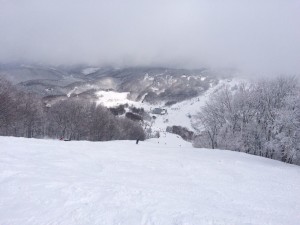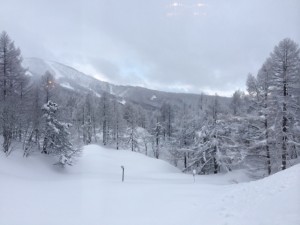The climate and weather of winter differs across Japan. Depending on the geometry and the latitude of where you are, some prefectures have snow, whereas others are quite warm. For example, Hokkaido prefecture, which is the largest prefecture and located very close to Russia, experiences heavy snow during the winter. The snow does not melt until the middle of March. On the other hand, Okinawa prefecture, located near Taiwan, is warm all year round. So, when there is a blizzard in the North of Japan, people living in Southern parts of Japan are outside not wearing a coat. In Tokyo, which is in the middle area of Japan, the winter is bitter, but it rarely snows.
Here is some information about a typical or average Japanese winter. During the cold season, people replace their usual table in the living room with a kotatsu table. Kotatsu tables have a built-in electric heating system to warm up your feet. To maintain the heat under the table, there is a futon placed between the surface and the legs of the table. So, once you sit on the floor at the table, your waist is covered with a futon and your legs are kept warm and cozy by the heating device. Most Japanese people have experienced at least once falling asleep unintentionally in the kotatsu because of its coziness. A typical Japanese living room would have a kotatsu with a plate of mandarins placed in the middle of the table. The origin of this unique custom is not clear; however, one theory states that mandarins were a great way to obtain nutrients and prevent colds during the harsh winter.
A popular winter activity is skiing and snowboarding. These winter sports are popular among families and college students. Most famous skiing resorts are in Nagano prefecture, where the 1998 Winter Olympics was held, or Hokkaido, where there are plenty of natural snow mountains.



Get Social